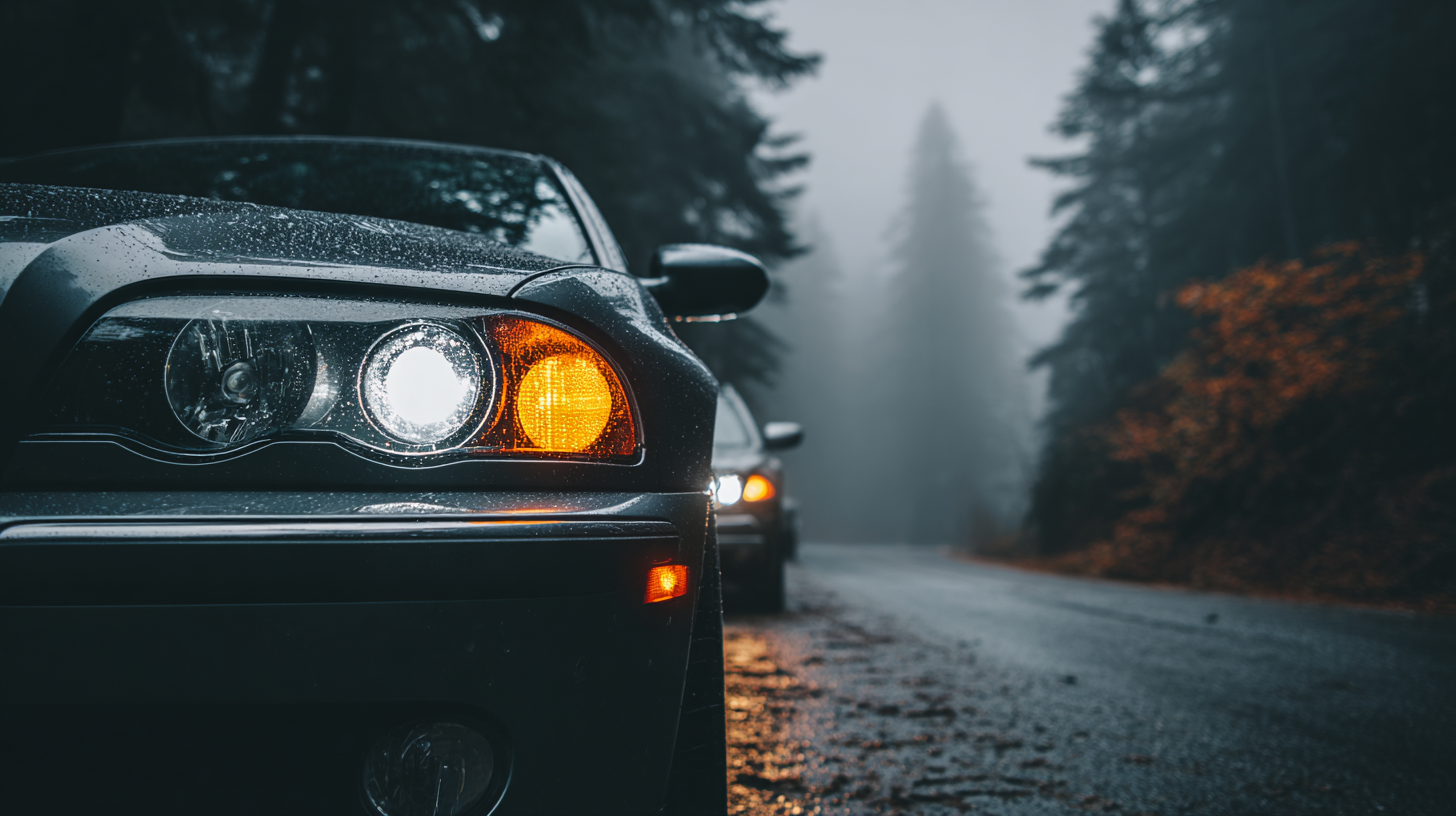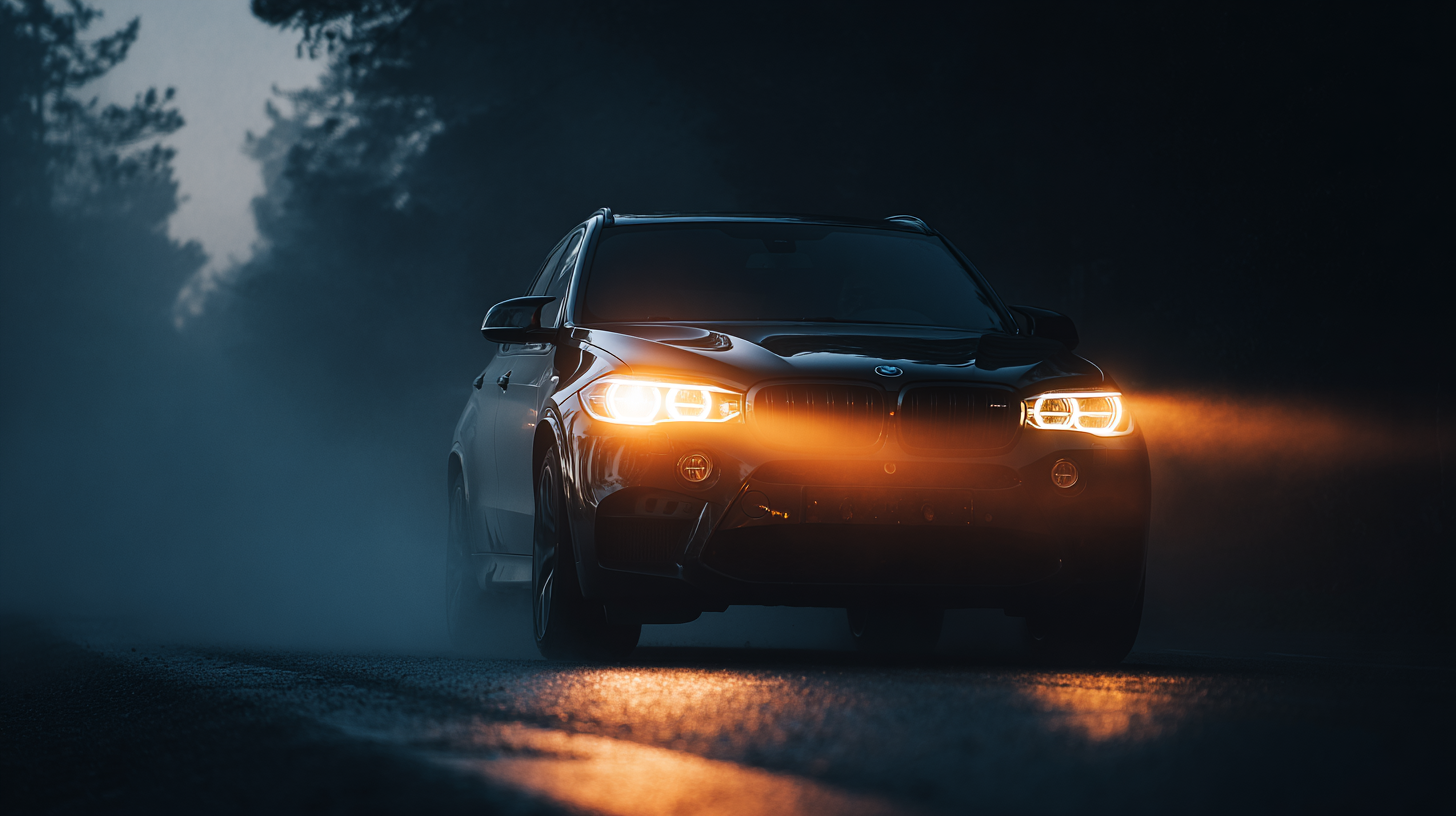In today's automotive landscape, "Fog Lights" have become an essential component for ensuring safety and visibility during adverse weather conditions. According to a report by the Global Automotive Lighting Market, the demand for advanced lighting solutions, particularly fog lights, is projected to grow at a significant CAGR of 6.8% from 2021 to 2026, fueled by advancements in LED technology and the increasing focus on vehicle safety. As global buyers look for reliable and efficient fog lights, understanding key technical specifications such as lumens output, beam patterns, color temperature, durability, and installation ease becomes paramount. This ultimate guide aims to equip consumers with the necessary insights to navigate the myriad options available, while also highlighting the innovative prowess of Chinese manufacturers, who have emerged as leaders in producing high-quality, cost-effective automotive lighting solutions.

Driving conditions can vary significantly due to weather, making it essential for drivers to understand the importance of fog lights. Fog lights provide a wider and shorter beam that illuminates the road immediately in front of the vehicle, enhancing visibility in low-light and adverse weather conditions such as rain and fog. In regions like Tennessee, where rainy conditions contribute to nearly 10% of trucking accidents, having effective fog lights can mean the difference between a safe journey and a collision.
When driving in poor visibility, here are a few tips to consider: first, always use your fog lights in misty or foggy weather instead of regular headlights, as this helps prevent light from reflecting off the fog. Additionally, maintain a safe following distance behind vehicles and reduce your speed to adapt to the reduced visibility. Remember to turn off your fog lights when visibility improves to avoid blinding other drivers. These simple precautions, combined with the use of high-quality fog lights, can significantly improve safety on the road.
This chart illustrates the visibility range of fog lights under various weather conditions, highlighting the importance of fog lights for safe driving in low visibility scenarios.
When it comes to choosing the best fog lights, understanding key technical specifications is essential for making an informed decision. The first critical aspect is the beam pattern. According to a report by the National Highway Traffic Safety Administration (NHTSA), a proper beam pattern not only illuminates the road effectively but also reduces glare for oncoming drivers, enhancing overall safety. Fog lights typically feature a wide, low beam that cuts through fog and rain, providing better visibility in adverse weather conditions.
Another important specification is the lumens output. A study from the Automotive Lighting Association indicates that fog lights should ideally produce between 1,000 to 2,000 lumens for optimal performance. This level of brightness ensures that drivers can see the road clearly in foggy conditions without overwhelming other road users. Additionally, it's crucial to consider the color temperature, which is measured in Kelvin (K). Research shows that a color temperature between 3000K and 4000K offers the best visibility in fog, as it reduces the scattering of light, making it easier to identify objects in limited visibility scenarios.
By focusing on these essential technical specifications—beam pattern, lumens output, and color temperature—global buyers can significantly enhance their vehicle's safety and performance during challenging driving conditions.
| Specification | Detail |
|---|---|
| Type of Bulb | LED, Halogen, Xenon |
| Lumens Output | 1000 - 3000 Lumens |
| Color Temperature | 3000K - 6000K |
| Water Resistance Rating | IP67 or higher |
| Beam Pattern | Fog Beam, Spot Beam, Combo Beam |
 When it comes to choosing the best fog lights, understanding the differences between LED, Halogen, and Xenon technologies is critical for global buyers. LED fog lights have gained immense popularity due to their energy efficiency and longevity, often lasting up to 25,000 hours compared to Halogen bulbs, which typically last around 1,000 hours. According to a 2023 report from the Automotive Lighting Institute, LED lights are up to 80% more efficient than traditional Halogen, providing brighter illumination while consuming less power. The cold color temperature of LED lights, usually around 6000K, enhances visibility during foggy conditions, making them a preferred choice among drivers.
When it comes to choosing the best fog lights, understanding the differences between LED, Halogen, and Xenon technologies is critical for global buyers. LED fog lights have gained immense popularity due to their energy efficiency and longevity, often lasting up to 25,000 hours compared to Halogen bulbs, which typically last around 1,000 hours. According to a 2023 report from the Automotive Lighting Institute, LED lights are up to 80% more efficient than traditional Halogen, providing brighter illumination while consuming less power. The cold color temperature of LED lights, usually around 6000K, enhances visibility during foggy conditions, making them a preferred choice among drivers.
On the other hand, Halogen fog lights are known for their affordability and easy replacement, making them a common choice for budget-conscious buyers. However, they emit a yellowish light that might not cut through dense fog as effectively as Xenon lights, which produce a brighter, whiter beam with a temperature of around 4300K. Xenon lights, albeit more expensive, offer a range of benefits including faster startup time and better visibility, often making them the go-to for premium vehicles.
Tips: When selecting fog lights, consider the specific weather conditions you'll often encounter; for frequent foggy areas, LED might be the superior choice. Additionally, always check compatibility with your vehicle to ensure optimal performance. Lastly, while LED and Xenon lights may have a higher upfront cost, their durability and efficiency can result in long-term savings.
When selecting fog lights for your vehicle, there are several crucial factors to consider to ensure you make the best choice for your needs. Firstly, it's essential to look at the light output, commonly measured in lumens. Higher lumens mean brighter lights, which can significantly enhance visibility in foggy or low-light conditions. Secondly, choose a light color that complements your driving style; yellow or amber lights can penetrate fog better than white lights, providing clearer sight.
Next, the beam pattern plays a vital role in how effectively the fog lights function. A wide, short beam can illuminate the road immediately in front of you, minimizing the chances of light reflecting off the fog and back into your eyes. Additionally, consider the build quality and weather resistance of the fog lights. Look for models made from durable materials with sealed designs to withstand harsh weather conditions. Lastly, ensure compatibility with your vehicle's electrical system and consider ease of installation, as some models may require professional help. With these specifications in mind, you can confidently choose fog lights that will enhance your driving experience.
Chinese manufacturing is playing a pivotal role in the transformation of the global fog light market, leveraging advanced technologies and competitive pricing. With the growing demand for efficient automotive lighting solutions, manufacturers are focusing on innovative designs that enhance safety and visibility. The introduction of LED lighting has revolutionized this sector, as evidenced by the projected growth of the global automotive LED headlamps market, which is expected to reach USD 59.15 billion by 2034, reflecting a compound annual growth rate (CAGR) of 6.62%.
Moreover, the newly developed LED innovations, such as the OSRAM XLS LR6, showcase the capacity for groundbreaking design in automotive rear lighting. These advancements not only improve aesthetic appeal but also provide practical solutions for vehicle illumination, marking a significant milestone for manufacturers aiming to adopt modern lighting technologies. As the global LED lighting segment anticipates reaching a valuation of USD 21.9 billion by 2030, it highlights the importance of integrating advanced lighting systems in vehicles, a testament to the influence of Chinese manufacturers in driving market trends and meeting global consumer needs.

